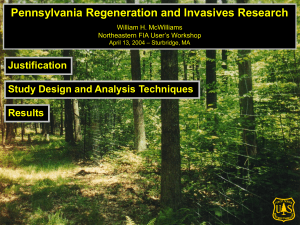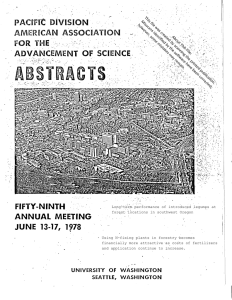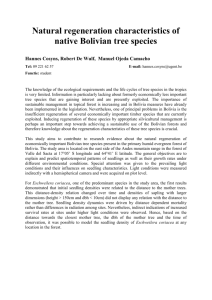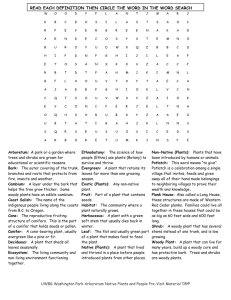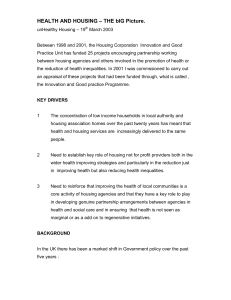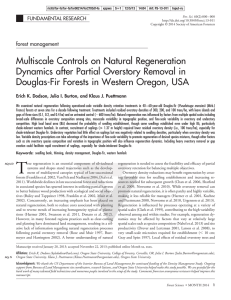Pennsylvania Regeneration and Invasives Research Justification Study Design and Analysis Techniques Results
advertisement
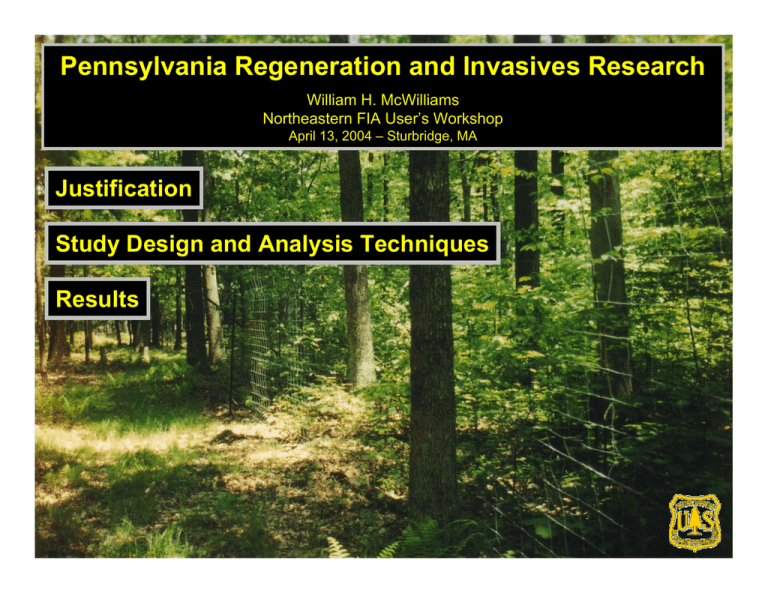
Pennsylvania Regeneration and Invasives Research William H. McWilliams Northeastern FIA User’s Workshop April 13, 2004 – Sturbridge, MA Justification Study Design and Analysis Techniques Results 140 1400 120 1200 100 1000 80 800 60 600 40 400 20 200 00 Millions of Millions ofTrees Trees Structure is Changing: Overstory vs. Understory Comparison of Composition by Tree Size – Top Ten Species Sawtimber Sapling ne Pi te sas hi frfarrch W ssssaaBi h ak Saac As h lele Bl hite AsMaapp e Whit eddMak W rrippe O nrne SStthitehthoroapl W awwt Mmm k HHagakrgguu Olea k c k t Suaacc uap lo Bll tnM m B easr He Ch g n Su tehrh kry s cc ar EBBaee dCOhe ry rh Rcek cerhc NBla CBBihri kkk aacc le BBll ap M ed RRe Study Team Goal: Develop Indicators of Regenerative Capacity for Pennsylvania Forests Using FIA Samples. Dan Devlin, Stephen L. Sterner NE RWU 4152: Pat Brose, Harry Steele, Susan Stout NE RWU 4557: Kurt Gottschalk, Gary Miller NE RWU 4801: William H. McWilliams, Susan King, Tonya W. Lister, Brian M. LaPointe, Charles T. Scott, James A. Westfall Robert White, Lois DeMarco Todd Bowersox, Jim Finley, Larry McCormick, Kim Steiner Designing the Sample – Pilot Study Goals FIA Sample 9 Determine how many microplots are needed to quantify size and composition of tree-seedling component. 9 Debug other measurement protocols. An analysis of CV showed that a single microplot was sufficient. Designing the Sample – Sub-Paneling Interpenetrating Sub-Panel of FIA Sample Locations (collected during leaf-on window, June-August) Regeneration Sample 1 2 3 4 3 4 5 1 5 1 2 3 1 2 3 4 5 1 3 4 5 1 2 3 Five-Year Panel Year One Year Two Year Three Year Four Year Five Designing the Sample – Three Levels Sample Location Level Old 1/5-acre plot Deer Impact: Record on of five Deer Impact classes: (after Marquis et al. 1994) Very Low Low Medium High Very High Microplot Level Condition A = Forest Land Use Condition B = Nonforest Land Use Site limitations Dominant Tree: If present, record the species of the most dominant tree at least 5.0 inches in diameter. Subplot Level Seedling Tally: Count all established seedlings at least 2” tall by: Site Limitations Species Associated Understory Vegetation: Assign Percent cover classes to Species/Life Form. Seedling Source (stump sprout and other) Stump Sprout Other Seedling Competitive oak, hickory, walnut, or butternut seedling The subplot is also where we tally Exotic Invasives, more on this later.. Species/Life Form Shrubs (FIA’s detailed code) Vines (FIA’s detailed code) Fern (Bracken, Hay-Scented, and New York) Other fern Grass Other herbaceous Height Class 2 inches to 6 inches 6 inches to 1 foot 1 foot to 3 feet Numbers of seedlings Percent Cover Class (after Marquis et al 1994) 3 feet to 5 feet 5 feet to 10 feet Greater than 10 feet Analyzing the Results Canopy-Replacement Species Grouping Dominants: canopy dominants* Other High Canopy: add other high-canopy species Woody: add all other tree species * all species with at least 2-percent of the State’s biomass and typically form high canopy Timber-Based Species Grouping Desirable: species desired for timber management Other Commercial: add other commercial species Woody: add all other tree species Analysis: applied regeneration guidelines for Pennsylvania and evaluated the results after screening for plots where the forest floor receives enough light for seedling development. Regeneration Study - Results Percent of Samples Meeting Regeneration Criteria, Timber Group – High Deer: Desirable Commercial 36 % 50 % Interpretation: Desirable: about two-thirds would likely fail to regenerate. Commercial: about half would likely fail. Woody: over 40 % would likely fail. Woody 57 % Regeneration Study – Results – Ecoregion Plateau Desirable 28 % Commercial Woody 44 % 48 % Western Broadleaf - West Desirable 44 % Commercial Woody 51 % 61 % Eastern Broadleaf - East Desirable 36 % Central Appalachian Desirable 37 % Commercial 54 % Woody 60 % Commercial 54 % Woody 64 % Exotic Invasive Species - Justification Chief’s Agenda Ann Bartuska’s Agenda Bureau of Forestry The Nature Conservancy Morris Arboretum Exotics Survey – New in 2003 Regeneration Study Plots used to tally thirty-one species of Exotic Invasive trees, shrubs, vines, grasses and forbes. Results are forthcoming: - Distribution Maps - Correlation Future Research Needs Develop indicators for associated understory vegetation. Develop an understory vegetation community classification system. Relate levels of associated understory vegetation to regeneration success. Incorporate invasive species data. Analyze results for specific forest types, for example mixed oak. Explore relationships between overstory and understory composition. The End
